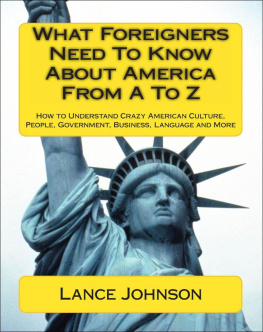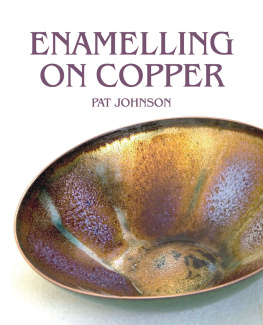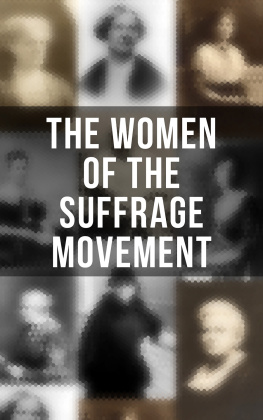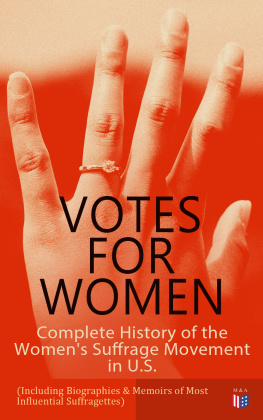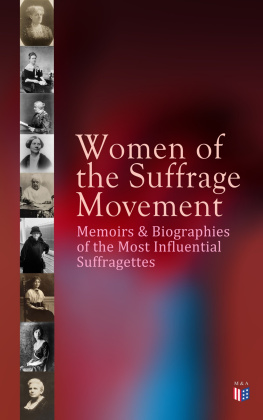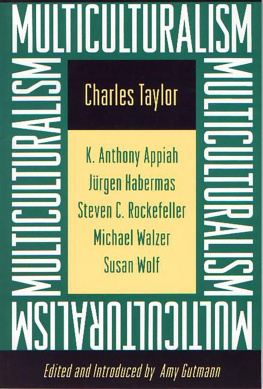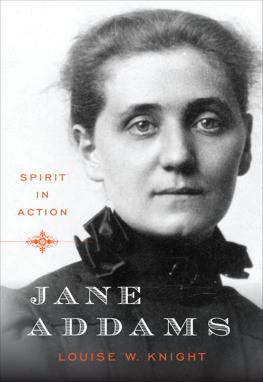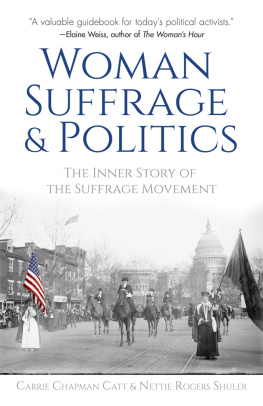and
Reforming America
A Thematic Encyclopedia and Document Collection of the Progressive Era
Jeffrey A. Johnson, Editor

Copyright 2017 by ABC-CLIO, LLC
All rights reserved. No part of this publication may be reproduced, stored in a retrieval system, or transmitted, in any form or by any means, electronic, mechanical, photocopying, recording, or otherwise, except for the inclusion of brief quotations in a review, without prior permission in writing from the publisher.
Library of Congress Cataloging-in-Publication Data
Names: Johnson, Jeffrey A., 1976 editor.
Title: Reforming America : a thematic encyclopedia and document collection of the progressive era / Jeffrey A. Johnson, editor.
Description: Santa Barbara, California : ABC-CLIO, 2017. | Includes bibliographical references and index.
Identifiers: LCCN 2016025270 (print) | LCCN 2016033096 (ebook) | ISBN 9781440837203 (set : hard copy : alk. paper) | ISBN 9781440847523 (v. 1 : hard copy : alk. paper) | ISBN 9781440847530 (v. 2 : hard copy : alk. paper) | ISBN 9781440837210 (ebook)
Subjects: LCSH: Progressivism (United States politics)History19th century. | Progressivism (United States politics)History20th century. | United StatesPolitics and government18651933.
Classification: LCC E661 .R44 2017 (print) | LCC E661 (ebook) | DDC 324.2732/7dc23
LC record available at https://lccn.loc.gov/2016025270
ISBN: 978-1-4408-3720-3 (set)
ISBN: 978-1-4408-4752-3 (Volume 1)
ISBN: 978-1-4408-4753-0 (Volume 2)
EISBN: 978-1-4408-3721-0
21 20 19 18 17 1 2 3 4 5
This book is also available as an eBook.
ABC-CLIO
An Imprint of ABC-CLIO, LLC
ABC-CLIO, LLC
130 Cremona Drive, P.O. Box 1911
Santa Barbara, California 93116-1911
www.abc-clio.com
This book is printed on acid-free paper 
Manufactured in the United States of America
Contents
VOLUME 1
VOLUME 2
Preface
Reforming America is organized into two volumes and includes well over 200 entries on prominent figures, themes, organizations, legislation, and more. They focus on the subsequent social problems and reform movements that shaped the late nineteenth and early twentieth centuries. Readers will benefit from its detailed list of topics (purposefully sensitive to political, social, and cultural themes, including popular culture). Penned and researched by professionals hailing from North America, Europe, and Asia, including both well-established specialists and emerging scholars working on the Progressive Era, the essay collection is organized into five broad thematic areas: Work and Economic Life; Social and Political Life; Science, Literature, and the Arts; Cultural and Religious Life; and Sports and Popular Culture. In each section, a section overview and primary sources are included.
The volumes trace the breadth of the Progressive Era (from approximately 1893 to 1920) and offer a wide array of entries on a broad list of topics. Reform and innovation are covered across the period and special attention is paid to important topics of race, class, and gender reform and reformers. While the list of entries is not meant to be comprehensive, it does purposefully span the countless sub-fields of the Progressive Era (from art history to xenophobia).
Reforming America attempts to offer windows into this important and complex period in American history. It was compiled to provide these readers and other researchers a valuable tool. This book is intended for students of the Progressive Era, primarily advanced high school students and early career college students, though many others should find this a useful resource. It offers in one collected two-volume work the most significant people, places, and moments of the reform era. Collectively the entries make plain both the problems and approaches that dominated the day. The end of each essay includes a see also section to help the reader identify related topics included in these volumes. Also presented are primary sources that provide additional glimpses into the voices of the day. At the end of the second volume, along with the comprehensive index, the Bibliographic Essay summarizes key scholarship on the Progressive Era and provides further reading. A chronology is also included to give readers a quick look at the important moments of the period.
In the United States the 1890 Census revealed that the richest 1 percent in America earned more than the poorest 50 percent combined, and half of all Americans owned no property. In the late nineteenth century and early twentieth century the United States faced great divides beyond wealth inequity, including race relations, gender roles, corruption, and more. Undeniably, the nation stood at a crossroads of tackling social and political issues, and this era of reform gave rise to a new modern United States. Reforming America is a detailed look at the individuals, themes, and moments that shaped this important Progressive Era in American history. It spans 25 years of reform and will provide valuable reference and insight into the period. These volumes hope to provide students and researchers of this period a window into this disparate time in American historyone that signaled the rise of the modern United States of America, warts and all.
Acknowledgments
Many hours of hard work by many people went into creating Reforming America , and I am grateful for all of these individuals and their contributions.
When I began the project I reached out to professors and high school history teachers I trusted, and they provided invaluable early guidance, and many of whom contributed entries themselves. Those individuals included Robin Payne (Fairmont State), Lindsay Wengloski (Univ. of Wisconsin), Christopher Lee (Univ. of Michigan), Amy Mckinney (Northwestern College), Mathias Bergmann (Randolph-Macon), Christine Eisel (Memphis), Kristian Fabian (UCSD), Mike Ezra (Sonoma State), Fred Jordan (Woodberry Forest School, VA), Matt Kazlauskas (The John D. OBryant School, Boston, MA), Mark Johnson (Notre Dame), Ed Moynihan (Worcester State), Michael Illuzzi (Lesley Univ.), and Amanda Van Lanen (Lewis-Clark State). Finally, three great colleagues at Providence College helped with volume ideas, too: Edward Andrews, Fr. David Orique, and Steven C. Smith.
Also supporting me and the project in various ways were my parents, George and Joyce, Allison Soled, Lorraine and Scott Myers, and Ryan and Trish Shea.
Michael Millman, senior editor at ABC-CLIO, trusted me with this project and I am grateful he and the press brought me on board in 2014. Thank you to my colleague Mario DiNunzio, also, for putting me in touch with Michael in the first place. Others at ABC-CLIO have been so helpful as well, so additional thanks are due to Michelle Scott, Karen Morris, Barbara Patterson, Shruti Chopra, and Harold Johnson.
Special thanks are also owed to my development editor, Patrick Hall. His close eye and speedy work have not only kept this project on track, but also made the entire process a pleasurable one. While any mistakes that appear are entirely my own, his dutiful assistance and keen editing skills have only improved the quality of the work.
But it is my wife Dena who deserves my deepest gratitude. She patiently and reassuringly listened to talk about this project for many months. Her constant support and love, more than anything, mean the most to me.
Introduction
As the turn of the twentieth century loomed, the United States entered a period of brisk change. After the Civil War, and certainly compared to the earlier nineteenth century, the economy had expanded, pace of life quickened, and values shifted. How the nation would come to terms with this changing world is at the heart of what has become known as the Progressive Era.
Next page

